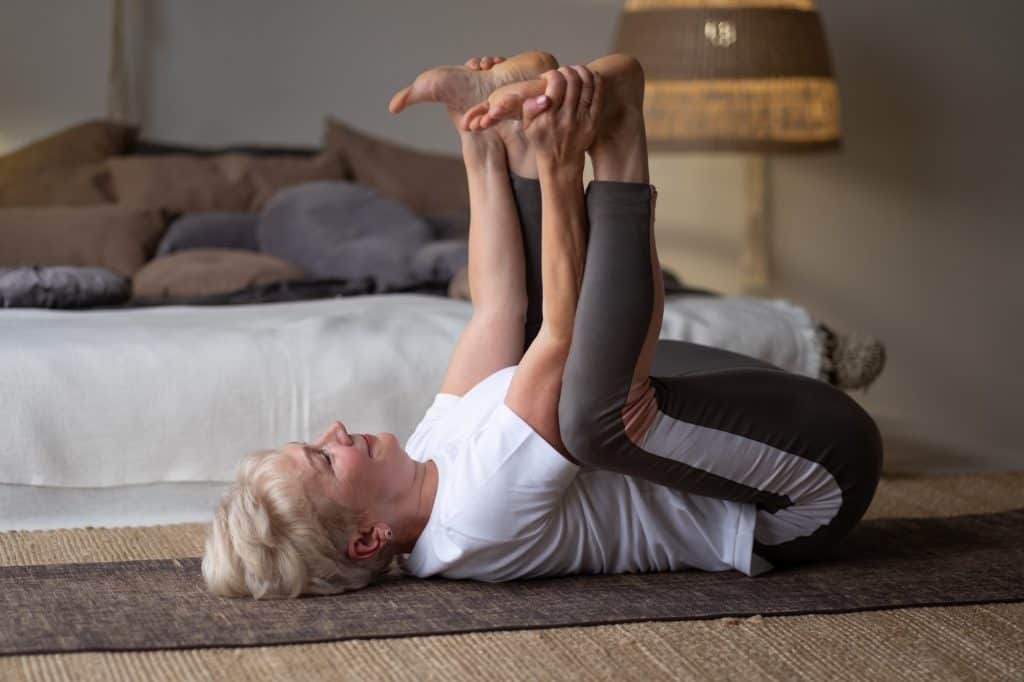Would you like to strengthen your pelvic floor muscles but are unsure how to do it?
The pelvic floor muscles are the large muscles you feel when you try to control the urine flow from leaving your body. Depending on how well you can control the flow is an indication of how strong your pelvic floor muscles are.
If you have weak pelvic floor muscles, doing pelvic floor exercises (or consulting with a women’s health specialist) is vital.
We can help you strengthen the muscles and prevent genitourinary problems like urinary incontinence and pelvic organ prolapse.
But it’s important to remember that weak or overly tight pelvic floor muscles aren’t just a problem for women. Research also suggests that improving pelvic floor function enhances male sexual function, and pelvic floor therapy can treat and prevent erectile dysfunction.
More Blogs From Focus Osteopathy
The Effects Of Postpartum: What You Need To Know
How To Strengthen The Pelvic Floor
Why Does My Hip Pain Linger After Pregnancy
What Is A Pelvic Organ Prolapse?
Pelvic organ prolapse is a non-life threatening medical condition where one or more of your pelvic organs drop down from their rightful place into the vagina. The organs a pelvic organ prolapse can affect include the bladder, bowel, uterus, and the top of the vagina.
Women with pelvic organ prolapse can sometimes pass urine or defecate unintentionally and experience pelvic pain, pressure, painful sex and/or a reduction in sexual sensations in the vagina.
What Causes Pelvic Organ Prolapse

Several factors put stress on and weaken the pelvic floor muscles and contribute to the development of pelvic organ prolapse, including:
- Gaining excessive weight or obesity
- Vaginal childbirth and pregnancy
- Undergoing pelvic surgery, including a cesarean delivery
- Frequent sudden movements like sneezing/coughing/ laughing
- Genetic predisposition (As some people are born with a greater risk of developing pelvic floor muscle weakness than others)
- The ageing process (As we grow older, the pelvic floor muscles weaken along with those in the anus and rectum. A decrease in estrogen levels in women can also lead to pelvic floor muscle weakness)
- Contact sports of any kind
- Lifting heavy weights
- Running and jumping
How To Locate The Pelvic Floor Muscles

The pelvic floor muscles are a sling-like group of muscles that stretch from the pubic bone to the tailbone. Locating the muscles is relatively easy.
For example, when sitting on the toilet, interrupt the urine flow (only to be done to find the muscle group and not habitually, as it could lead to medical issues). When you interrupt the flow, the muscles that you feel squeezing are your pelvic floor muscles.
Another option to help locate them is to place a finger inside your vagina and squeeze the muscles, which should lead to pressure on your finger. Again, the muscles within the vagina that lift and squeeze and put pressure on your finger are the pelvic floor muscles.
But what can you do to strengthen the pelvic floor muscles and prevent pelvic organ prolapse?
Pelvic Floor-Strengthening Exercises

Kegel Exercises
These exercises are also known as pelvic floor exercises and help build stronger pelvic floor muscles. They allow you to lead a more enriching sex life with improved orgasms and prevent you from suffering urinary and fecal incontinence.
Strong pelvic floor muscles also ensure that the bladder, uterus, and bowels don’t drop down within the vagina, the medical condition referred to as “pelvic floor prolapse”.
How To Perform Kegel Exercises
You can do Kegel or pelvic floor exercises by lifting/holding and relaxing the pelvic floor muscles. Begin with a limited set of exercises (lift/squeeze/relax) for 3-5 seconds. Over time, aim to increase the duration and number of sets in every session. With practice, you should aim for 3-4 sets of exercises every day.
Begin each exercise with a lift and hold for 3-4 seconds, followed by resting for the same number of seconds. Initially, do this five times continuously and consider that one set (later, with practice, you can raise that to 10 repetitions).
After doing the exercises at least twice a day for a while, you should start to see some improvement. When you do, you can start to increase the duration of lifting/holding/relaxing and the number of sets and times per day that you do them.
For example, when you start, hold/lift and relax for 3 seconds, building gradually to 4 seconds and with practice, 5 seconds. Then slowly raise the number of exercises from 5 – 8 to 10 in each set and increase the frequency of your daily pelvic floor muscles from twice to three times per day.
The great thing about these Kegel exercises is that you can do them standing, lying, or sitting down. Although, if you have weak pelvic floor muscles, it would be better to start out lying down.
Also, doing them first thing when you wake up in the morning and the last thing at night before sleep is an excellent way to make them part of your daily routine.
One thing to note is that you should never hold your breath when you do Kegel exercises. Instead, breathe outwards as you perform the exercise.
Also, try not to squeeze another muscle group – like the stomach, back, thighs or buttocks – while you perform the exercises. If you feel these muscle groups squeezing, you’re not performing the Kegel correctly.
Lastly, while there are plenty of advertisements online and in the media about specialised Kegel equipment, most are not worth the investment, so do not fall for the over-hyped marketing.
You can perform pelvic strengthening exercises without any equipment whatsoever.
As with any exercise routine, do not expect to see results overnight. It takes time and effort to increase strength and endurance. However, most women report a noticeable improvement in their symptoms around the 12-week mark when they do the exercises daily.
Happy Baby

Start lying on your back with your knees bent at a 90-degree angle.
Raise your knees up and forward towards your abs – with the bottom of your feet facing the sky.
Then grab onto the soles of your feet and widen your knees slightly, as far as is comfortable and feel the stretch.
Rest in this position for as long as possible while taking deep, relaxing breaths in and out – to calm your nervous system and relax your pelvic floor muscles.
Another great way to ensure that you have strong and healthy pelvic floor muscles is to take up Pilates.
Pilates improves your mobility and flexibility, builds your total-body strength, and alleviates unnecessary stress on your joints AND strengthens the pelvic floor muscles.
Contact Us

Here at Focus Osteopathy we want to help you!
We have a team of specialists waiting to speak, if you are struggling or need help with your pelvic floor exercises don’t hesitate to get in touch.
We have offer a number of complimentary healthcare services designed to empower you and change your life.
Not sure if we’re the right fit for you? Book a Free Discovery Visit Here. We will be able to provide you with the help that you need.





